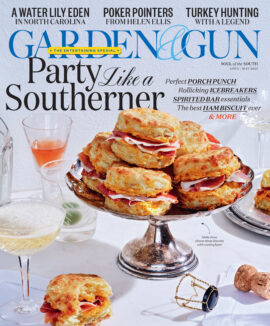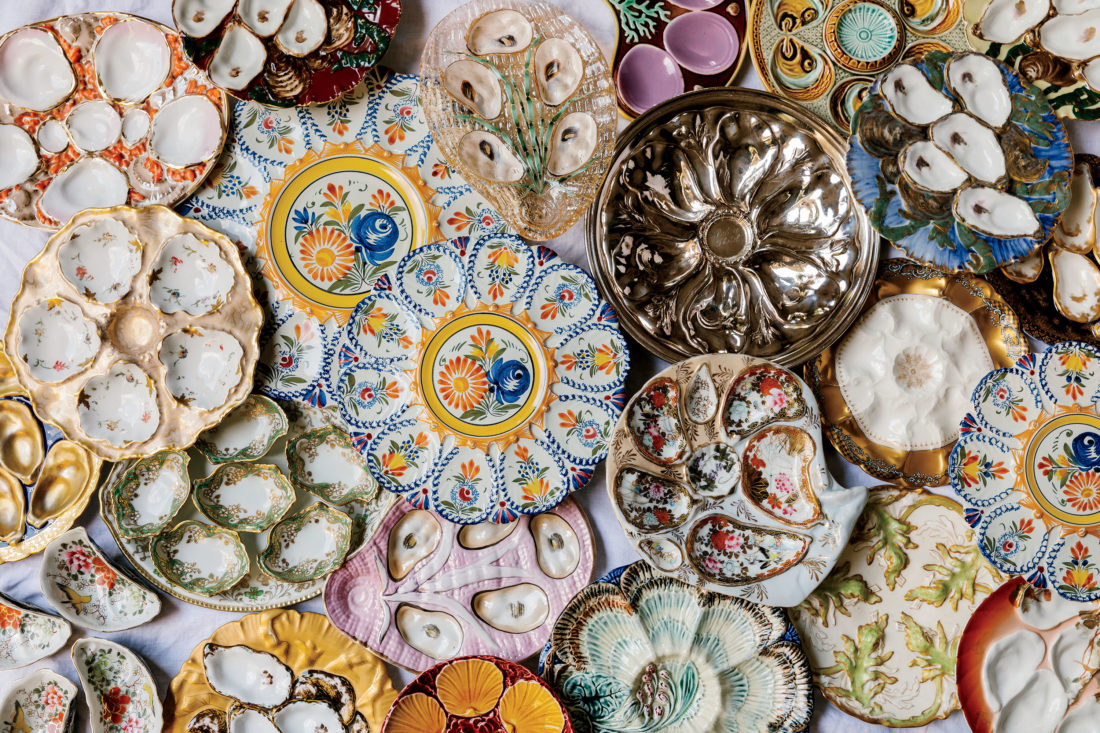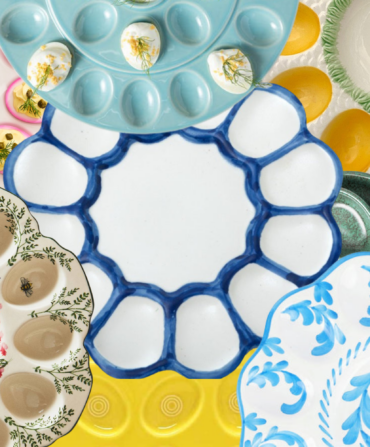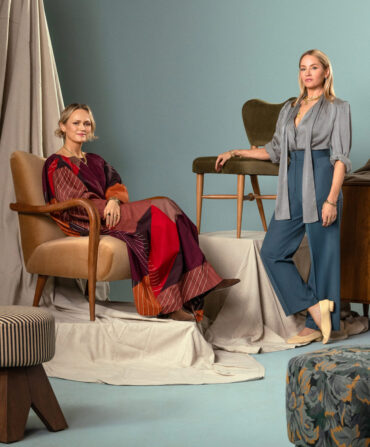Linda Peterson doesn’t eat oysters. But walking around her home in Auburn, Alabama, you’d be forgiven for assuming otherwise: More than one hundred oyster plates crowd her cabinets and cover her walls. The plates are distinguished by their depressions, or “wells”—typically between one and six of them—meant to accommodate oysters on the half shell (or with no shell at all). Some of Peterson’s pieces are as large as nine inches across, and round; others are more oddly shaped or diminutive, down to the group of “oyster shooter” dishes meant for single slurps. Oyster plates are traditionally beloved for their decoration, and these are no exception; the eye flits from feathery gilded details here, to hand-painted deep blue designs there, to a blush of bright pink on white, and on and on.
Peterson, who grew up outside Auburn, lived on the Chesapeake Bay for years with her late husband, Jon. There, he learned to harvest oysters later in life. “He didn’t live long enough to get it going the way he wanted,” she remembers. “But he enjoyed it.” Linda, who is now seventy-one, began acquiring the oyster plates twenty years ago to complement their life on the water; though she never took to the shellfish herself, she was drawn to the vivid aesthetics of the serving pieces—much like the original oyster-plate enthusiasts of the Victorian era.
Over the years, Steve Bonner, the co-owner of Virginia’s Kilmarnock Antique Gallery, has pointed Peterson toward plates of all kinds, helping make her private collection one of the most impressive in the region. A couple of pieces in particular stand out. One has a story of presidential proportions: In 1879, Rutherford B. Hayes’s wife commissioned a dining service for the White House, including oyster plates made by Haviland & Co. that featured five wells surrounded by beautifully detailed Southern raccoon oyster shells. The set cost $3,120 to make, scandalizing legislators. “To defray the cost,” explains Bonner, “Congress authorized the making of a limited number of reproductions, one of which Linda has.” A Hayes plate could go for $4,000 today, but to Peterson, that’s not the point. “It’s art to me,” she says. And so is another piece of note, a little more priceless than the others: When Peterson’s husband knew he might not have long to live, he purchased a final gift for her from Bonner: a rare cobalt oyster plate from J. E. Caldwell & Co. She received it as a Christmas surprise, shortly after he died.








